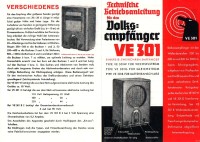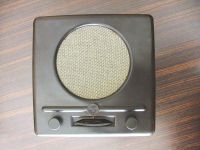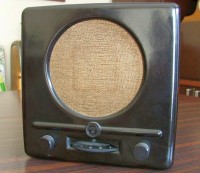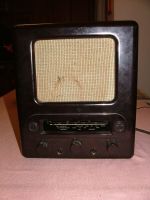 |
Volksradioempfängeren Ricevitori popolari tedeschi |
 |
|
|
 |
|
|
|
Di questi ricevitori, che ricevevano le Onde Medie e le Onde Lunghe, ne venivano prodotti due modelli, uno con alimentazione tramite rete elettrica e un altro con alimentazione a batterie. Visto il basso costo i DKE ebbero una diffusione enorme in Germania.
|
|||
| VE 301 W - Philips Radio, Valvo - 1933 | |||
 |
DKE 38 - Nora - 1938 | ||
 |
DKE 38B - RFW - 1938 | ||
 |
VE 301 dyn - Radione - 1939 | ||
|
In Germany, at the beginning of the 1930s, in order to make rapid and widespread communications between the government and the German people, the regime issued a directive that tasked the various German electronics industries with producing an economical radio receiver based on a single project agreed upon with the Ministry of Communications. The device, marked with the number 301 (January 30, 1931) to commemorate the year and month of the birth of the Third Reich, had to be produced by the industries in such a way that it provided good performance with maximum savings and was put on the market at the political price of 76 marks, equivalent to a third of the then current price for a radio receiver with similar performance. The initiative was an immediate success, so much so that during the 1930s the number of radios in Germany increased from 3 to 13 million. In this way, the regime's propaganda was able to enter people's homes and public places in a widespread and daily manner. The first Volks-Empfangër (people's receiver) was put on sale in 1933, but the VE301 was followed by other smaller and less expensive receivers because they were manufactured without transformers and with a large use of poor materials such as Bakelite and cardboard, such as the DKE38 (Deutscher Klein Empfangër). Of these receivers, which received Medium Waves and Long Waves, two models were produced, one powered by the mains and the other by batteries. Given their low cost, the DKEs had an enormous diffusion in Germany. The DKE (Kleinempfänger 38) was less sensitive than the VE, but if it was equipped with an adequate external antenna of at least 10 meters of electric wire laid out in the open, it allowed reception of the radio station located in the city or town closest to the listener. The radio could receive a few more stations in the evening-night when propagation increased. However, the low sensitivity was ideal for the regime, which wanted to prevent the German people from being able to hear "voices" coming from abroad, which could question and refute the claims of the German Propaganda Ministry. Above are links to pages of popular receivers I own, with descriptions of the circuits and how they work. © IK3HIA, 2025 |
|||
|
Return to top of page
|
|||